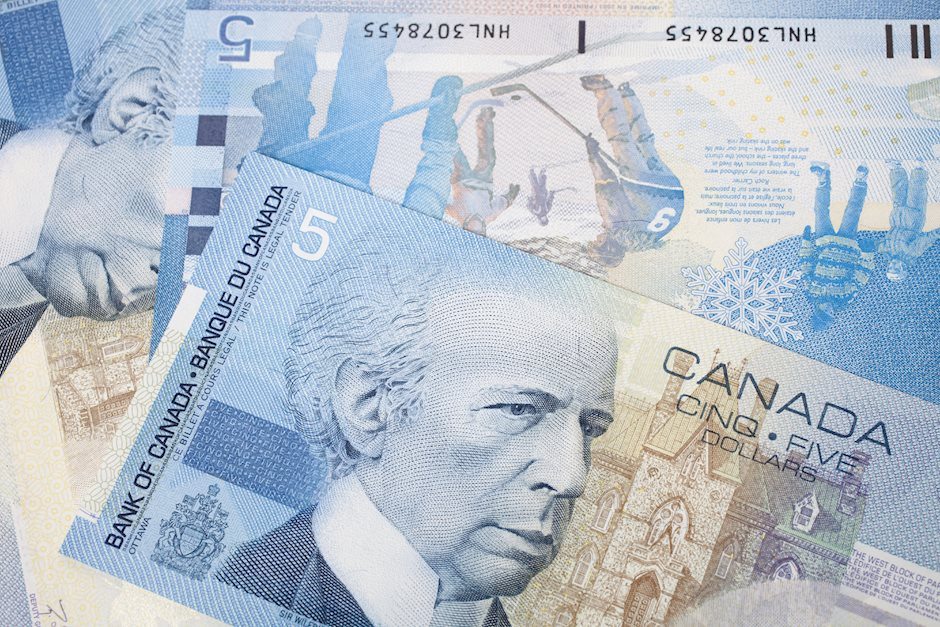USD/CAD gains above 1.4400 as US Dollar dominates on Fed’s cautious policy outlook
- USD/CAD climbs above 1.4400 as the US Dollar refreshes two-year high.
- The Fed is expected to follow a moderate rate-cut cycle this year.
- Investors await the US ISM Manufacturing PMI data for December.

The USD/CAD pair rises to near 1.4420 in Thursday’s European session. The Loonie pair gains as the US Dollar (USD) dominates its European and North American peers on expectations that the pace of interest rate cuts by the Federal Reserve (Fed) will be moderate this year than what had been seen in 2024.
The US Dollar Index (DXY), which tracks the Greenback’s value against six major currencies, posts a fresh more-than-two-year high at 108.60.
Fed officials have guided fewer interest rate cuts for this year as they are confident about the United States (US) economic outlook. The latest dot plot showed that policymakers collectively see Federal Fund rates heading to 3.9% by 2025, suggesting there will be more than one interest rate cut this year.
For more interest rate cuts, investors will focus on a slew of US labor market-related economic indicators, which will be released next week. Those economic indicators will show the current status of labor demand by US employers.
But before that, the US Dollar will be guided by the ISM Manufacturing PMI data for December, which will be released on Friday. The PMI report is expected to show that the manufacturing activities tick lower 48.3 from the prior release of 48.4, suggesting a contraction at a slightly faster pace.
Meanwhile, the outlook of the Canadian Dollar (CAD) remains bearish as the Bank of Canada (BoC) is expected to continue easing the monetary policy further. BoC officials worry about growing risks of inflation undershooting the bank’s target of 2%.
US Dollar FAQs
The US Dollar (USD) is the official currency of the United States of America, and the ‘de facto’ currency of a significant number of other countries where it is found in circulation alongside local notes. It is the most heavily traded currency in the world, accounting for over 88% of all global foreign exchange turnover, or an average of $6.6 trillion in transactions per day, according to data from 2022. Following the second world war, the USD took over from the British Pound as the world’s reserve currency. For most of its history, the US Dollar was backed by Gold, until the Bretton Woods Agreement in 1971 when the Gold Standard went away.
The most important single factor impacting on the value of the US Dollar is monetary policy, which is shaped by the Federal Reserve (Fed). The Fed has two mandates: to achieve price stability (control inflation) and foster full employment. Its primary tool to achieve these two goals is by adjusting interest rates. When prices are rising too quickly and inflation is above the Fed’s 2% target, the Fed will raise rates, which helps the USD value. When inflation falls below 2% or the Unemployment Rate is too high, the Fed may lower interest rates, which weighs on the Greenback.
In extreme situations, the Federal Reserve can also print more Dollars and enact quantitative easing (QE). QE is the process by which the Fed substantially increases the flow of credit in a stuck financial system. It is a non-standard policy measure used when credit has dried up because banks will not lend to each other (out of the fear of counterparty default). It is a last resort when simply lowering interest rates is unlikely to achieve the necessary result. It was the Fed’s weapon of choice to combat the credit crunch that occurred during the Great Financial Crisis in 2008. It involves the Fed printing more Dollars and using them to buy US government bonds predominantly from financial institutions. QE usually leads to a weaker US Dollar.
Quantitative tightening (QT) is the reverse process whereby the Federal Reserve stops buying bonds from financial institutions and does not reinvest the principal from the bonds it holds maturing in new purchases. It is usually positive for the US Dollar.
Author

Sagar Dua
FXStreet
Sagar Dua is associated with the financial markets from his college days. Along with pursuing post-graduation in Commerce in 2014, he started his markets training with chart analysis.

















